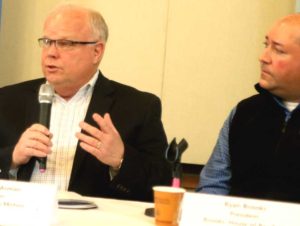Folks Flee Upstate,
USDA Exec Learns
Fewer Students For Hartwick College,
Jobs Available But Unfilled, Hazlett Told

By JIM KEVLIN • Special to www.AllOTSEGO.com

ONEONTA – Not only did the USDA assistant secretary for Rural Development learn about Upstate declining population at her visit to Hartwick College this morning, she got a sense of the impacts.
In her opening remarks, Hartwick President Margaret L. Drugovich reported a 17 percent decline in high school graduates between 2009 and 2017, and some predictions of “another 4-8 percent in the next 15 years,” a challenge for Upstate liberal arts colleges.
“These are the kind of things on my mind when we think about economic development,” said Drugovich, economic development being one of the topic when Anne Hazlett, the USDA official charged with rural development, convened a two-hour forum of a dozen community leaders in Shineman Chapel.
You have reached your limit of 3 free articles
To Continue Reading
Our hard-copy and online publications cover the news of Otsego County by putting the community back into the newspaper. We are funded entirely by advertising and subscriptions. With your support, we continue to offer local, independent reporting that is not influenced by commercial or political ties.

